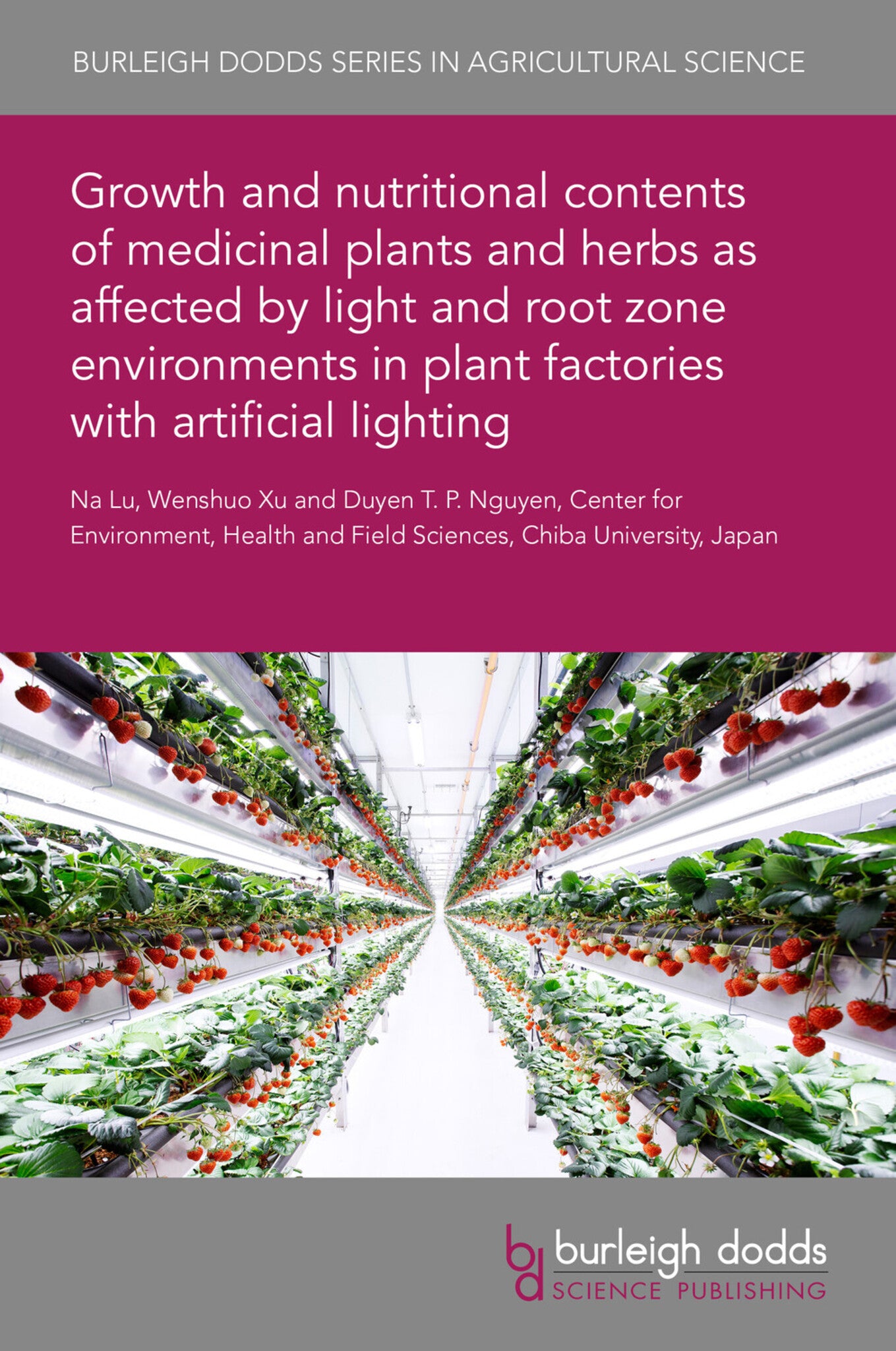We're sorry. An error has occurred
Please cancel or retry.
Growth and nutritional contents of medicinal plants and herbs as affected by light and root zone environments in plant factories with artificial lighting

Some error occured while loading the Quick View. Please close the Quick View and try reloading the page.
Couldn't load pickup availability
- Format:
-
14 September 2023

This chapter examines how light and root zone environments in plant factories with artificial lighting (PFALs) can affect the growth and nutritional components of medicinal plants and herbs. It first draws attention to perilla, a popular medicinal plant, and describes the effects of photosynthetic photon flux density (PPFD) and electrical conductivity (EC) on its growth and secondary metabolite accumulation. The chapter moves on to examine coriander and how PFFD, root zone temperature and the light spectrum affects the growth and secondary metabolite accumulation. A section on nasturtium is also included, focusing on the effects of EC, continuous lighting and daily light integral on nasturtium cuttings and plants. The chapter concludes by emphasising how the regulation of light and root zone environments can help to control plant growth in PFALs.

SCIENCE / Life Sciences / Horticulture, Commercial horticulture, TECHNOLOGY & ENGINEERING / Agriculture / Agronomy / Crop Science, TECHNOLOGY & ENGINEERING / Agriculture / Sustainable Agriculture, Sustainable agriculture, Agricultural science, Agronomy and crop production

- 1 Introduction
- 2 Perilla
- 3 Coriander
- 4 Nasturtium
- 5 Conclusion and future trends
- 6 References



